GAM - Android is a Linux-based operating system for mobile phones such as smartphones and tablet computers. Android provides an open platform for developers to create their own applications for use by a variety of mobile devices. Initially, Google Inc.. bought Android Inc.., newcomers who make software for mobile phones. Then to develop Android, formed the Open Handset Alliance, a consortium of 34 companies for hardware, software, and telecommunications, including Google, HTC, Intel, Motorola, Qualcomm, T-Mobile, and Nvidia.
At the inaugural release of Android, 5 November 2007, with the Open Handset Alliance Android states support the development of open standards on mobile devices. On the other hand, Google released the Android code under the Apache license, a license software and open standard mobile device.
In this world there are two types of distributors operating system Android. The first fully supported by Google or Google Mail Services (GMS) and the second is completely free distribution without direct support Google's otherwise known as the Open Handset Distribution (OHD).
History Of Android
- Cooperation with Android Inc.
In July 2005, Google works with Android Inc., A company located in Palo Alto, California United States. The founders of Android Inc.. working at Google, including Andy Rubin, Rich Miner, Nick Sears, and Chris White. At that time many consider the functions of Android Inc.. just as software on mobile phones. Since then rumors surfaced that Google was about to enter the mobile phone market. In the company Google, the team led by Rubin developed a program in charge of mobile devices supported by the Linux kernel. This shows an indication that Google is preparing for a competition in the mobile phone market.
- The Initial Product
Around September 2007 a study reported that Google filed a patent application mobile phone (Google finally introduced the Nexus One, one of the GSM smart phone that uses the Android operating system. Cellular phone is manufactured by HTC Corporation and available in the market on January 5, 2010) .
On December 9, 2008, announced new members who join the work program Android ARM Holdings, Atheros Communications, manufactured by Asustek Computer Inc, Garmin Ltd, Softbank, Sony Ericsson, Toshiba Corp, and Vodafone Group Plc. As the formation of the Open Handset Alliance, OHA announced their first product, Android, mobile devices (mobile) which is a modified Linux kernel 2.6. Since Android was released many updates have been made in the form of bug fixes and the addition of new features.
The first phone that uses the Android operating system is the HTC Dream, which was released on October 22, 2008. At the end of 2009 is estimated at least in this world there are 18 types of mobile phones that use Android.
- Android version 1.1
- Android version 1.5 (Cupcake)
In mid-May 2009, Google re-released mobile phone using Android and the SDK (Software Development Kit) with version 1.5 (Cupcake). There are several updates including the addition of several features in this mobile version of the ability to record and watch videos with the camera mode, upload video to YouTube and pictures to Picasa directly from the phone, A2DP Bluetooth support, the ability to automatically connect to a Bluetooth headset, animation screen, and on-screen keyboard that can be adapted to the system.
- Android version 1.6 (Donut)
Donut (version 1.6) was released in September by displaying the search process better than before, battery usage indicator and control applet VPN. Another feature is the gallery that allows the user to select the photos to be removed; cameras, camcorders and interface the gallery; CDMA / EVDO, 802.1x, VPN, Gestures, and a Text-to-speech engine; ability to dial contacts, technological change text to speech (not available on all phones; procurement VWGA resolution.
- Android version 2.0/2.1 (Eclair)
On December 3, 2009 re-launched Android phones with version 2.0/2.1 (Eclair), changes made are hardware optimization, improved Google Maps 3.1.2, change the UI with a new browser and support for HTML5, the new list of contacts, support flash for the camera 3 , 2 MP, digital zoom, and Bluetooth 2.1.
To move quickly in the competition next generation devices, Google held a competition to invest with the best mobile applications (killer apps - leading applications). This competition with prizes $ 25,000 for each selected application developers. The competition was held over two stages each step selected 50 best applications.
With the growing and increasing number of Android handsets, a growing number of third parties who wish to distribute their applications to the Android operating system. Applications are transformed into the renowned Android operating system is Shazam, Backgrounds, and WeatherBug. The Android operating system in the internet site is also considered important to create native Android applications, for example by MySpace and Facebook.
- Android version 2.2 (Froyo: Frozen Yogurt)
On May 20, 2010, the Android version 2.2 (Froyo) was launched. These changes are generally against previous versions include support for Adobe Flash 10.1, speed performance and application of 2 to 5 times faster, integration V8 JavaScript engine that used Google Chrome that speeds rendering capability in the browser, the application installation in SD Card, WiFi capabilities portable hotspot, and the ability to auto update in the Android Market.
- Android version 2.3 (Gingerbread)
On December 6, 2010, the Android version 2.3 (Gingerbread) was launched. General changes obtained from the Android version, among other upgrades games (gaming), improved copy and paste function, the display interface (User Interface) redesigned, support for video formats VP8 and WebM, new audio effects (reverb, equalization, headphone virtualization, and bass boost), support the ability of Near Field Communication (NFC), and the number of cameras support more than one.
- Android version 3.0/3.1 (Honeycomb)
Android Honeycomb is designed specifically for tablets. Android version supports larger screen sizes. User Interface on Honeycomb is also different because it is designed for tablets. Honeycomb also supports multi-processor and hardware acceleration (hardware) for graphics. The first tablet to run Honeycomb is the Motorola Xoom. Tablet device with Android 3.0 platform will be coming soon in Indonesia. The device named Eee Pad Transformer production from Asus. Indonesia plans to enter the market in May 2011.
- Android version 4.0 (ICS: Ice Cream Sandwich)
Announced on October 19, 2011, brought Honeycomb features to smartphones and added new features including facial recognition unlock with, network data usage monitoring and control, unified social networking contacts, photography enhancements, offline email search, and share information using NFC . The first phone that uses the operating system is Samsung Galaxy Nexus.
- Android version 4.1 (Jelly Bean)
Android Jelly Bean that launched at the recent Google I / O and brings a number of advantages and new features. The new additions include increased input keyboard, the new design features of the search, new UI and search through Voice Search is faster. Not to forget Google Now also a section updated. Google Now give the right information at the right time anyway. One is the ability to check the weather, the traffic, or the results of sporting events. The operating system Android 4.1 Jelly Bean first appeared in the Asus tablet product, the Google Nexus 7.
- Android version 4.2 (Jelly Bean)
Feature photo for panaroma sphere, daydream as a screensaver, power control, lock screen widget, run a lot of users (in tablets only), the latest widget.
Android 4.2 was first introduced by LG Google Nexus 4
Features Of Android
Features available on Android are:
- Framework application: it allows the use and removal of components available.
- Dalvik virtual machine: a virtual machine optimized for mobile devices.
- Graph: graphs in 2D and 3D graphics library based on OpenGL.
- SQLite: for data storage.
- Supporting media: audio, video, and various image formats (MPEG4, H.264, MP3, AAC, AMR, JPG, PNG, GIF)
- GSM, Bluetooth, EDGE, 3G, 4G, and WiFi (hardware dependent)
- Cameras, Global Positioning System (GPS), compass, NFC, and accelerometer (hardware dependent)
Android is open source communities
Android has various advantages as software that uses computer code base that can be distributed openly (open source) so that users can create new applications in it. Android has native applications such as integrated Google Gmail push email, Google Maps, and Google Calendar.
The fans then build open source communities to build and share Android-based firmware with a number of adjustments and additional features, such as FLAC lossless audio and the ability to save downloaded apps to the microSD card. They often update the firmware packages and combines elements of Android functionality that have not been officially launched in a carrier-sanction firmware.
Thanks For you visit, come back i am waiting....
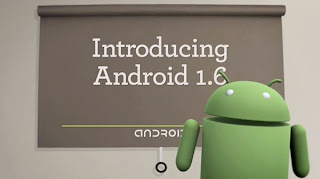
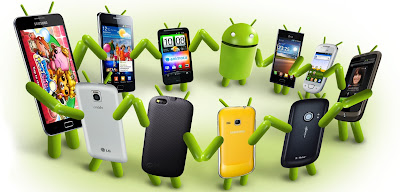

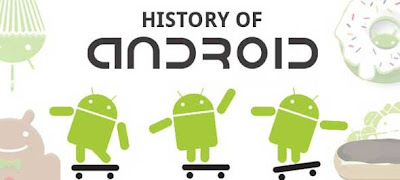

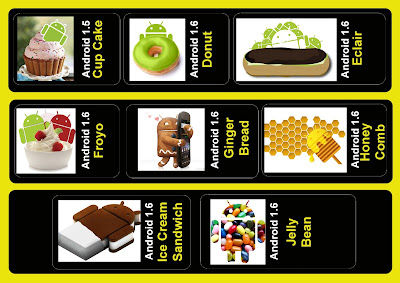
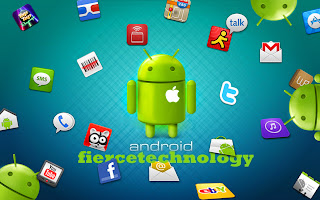


No comments:
Post a Comment